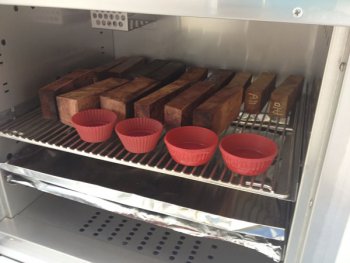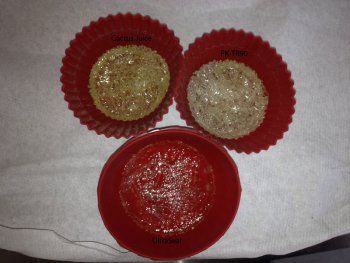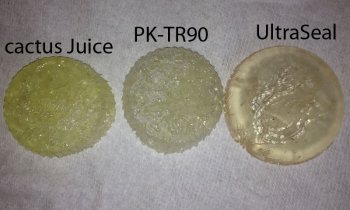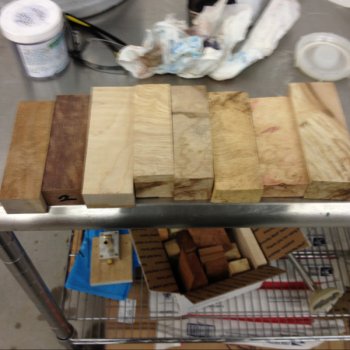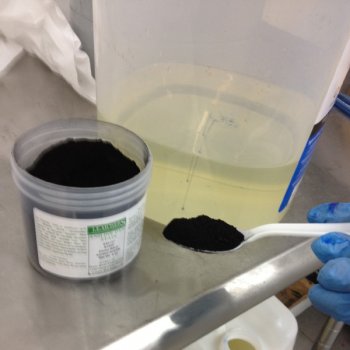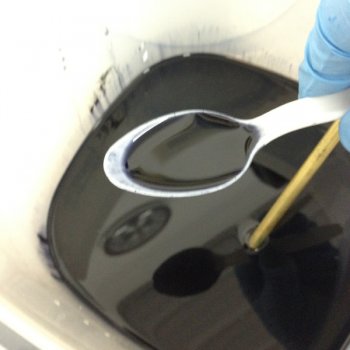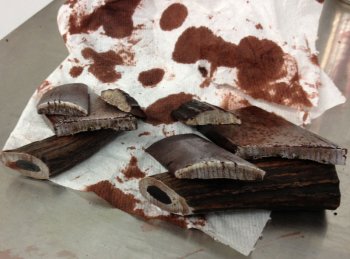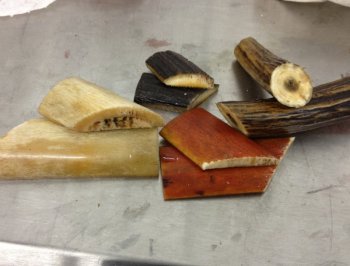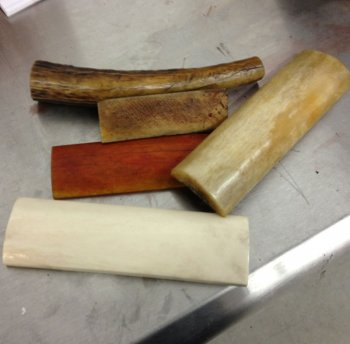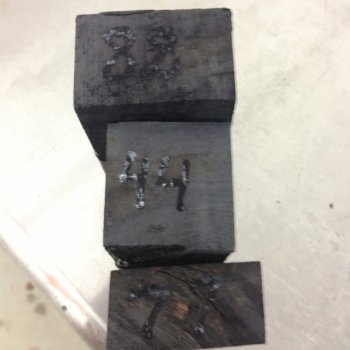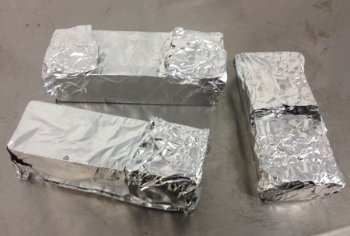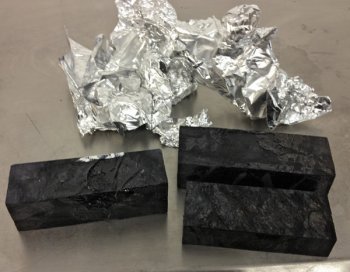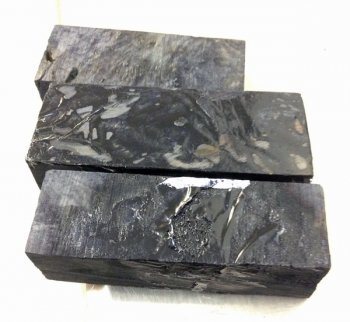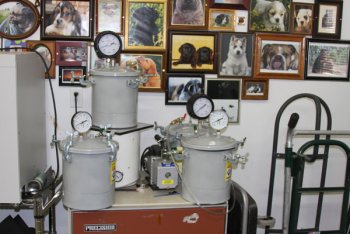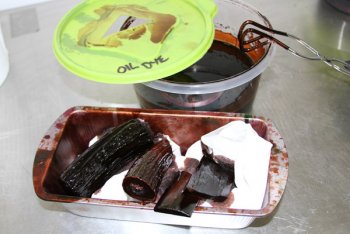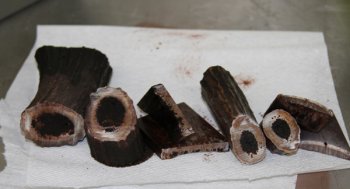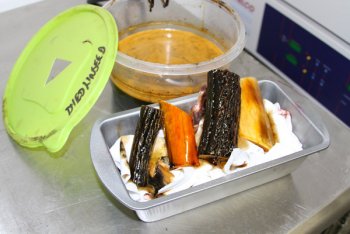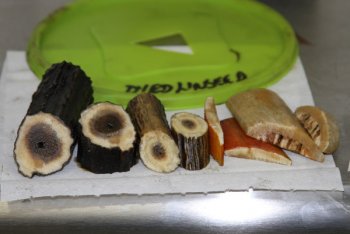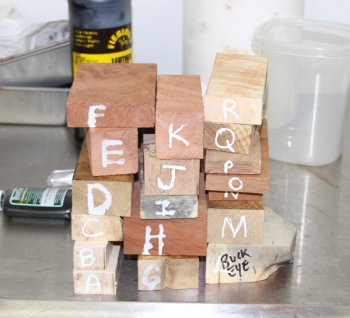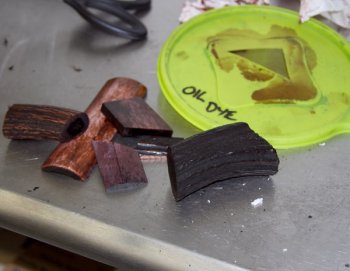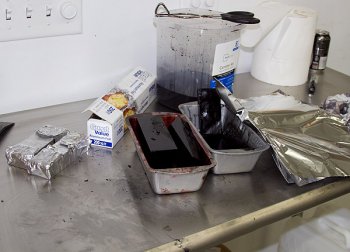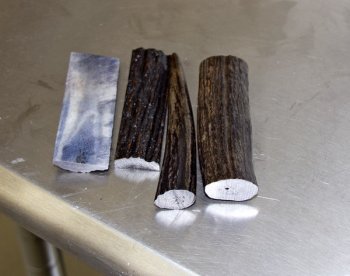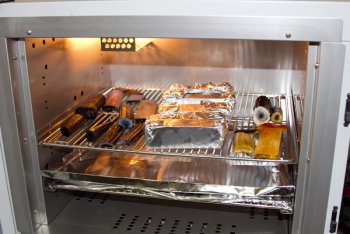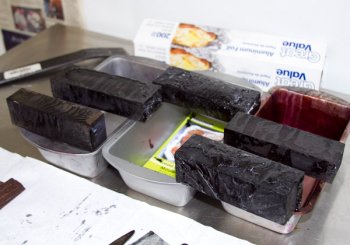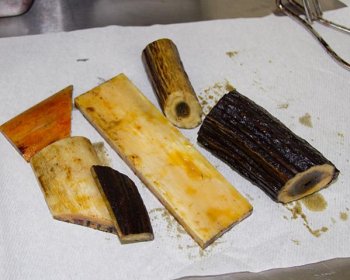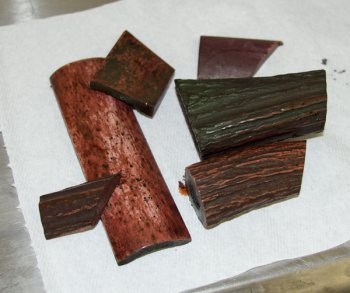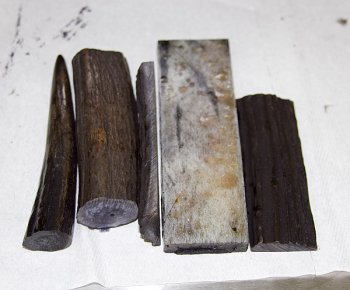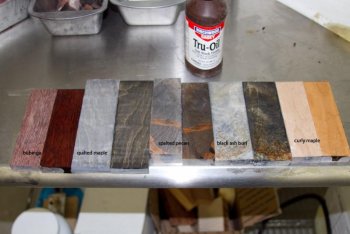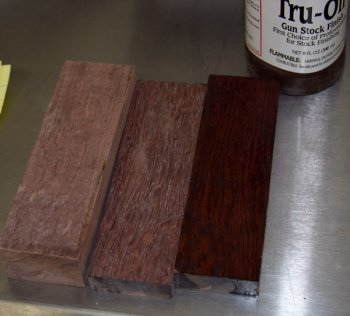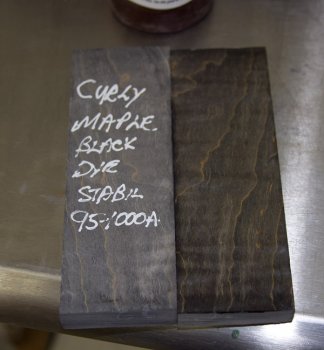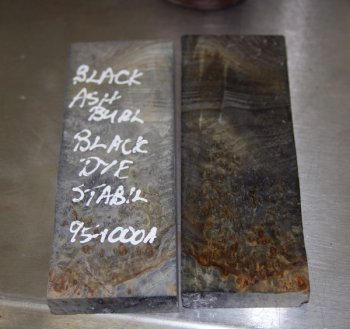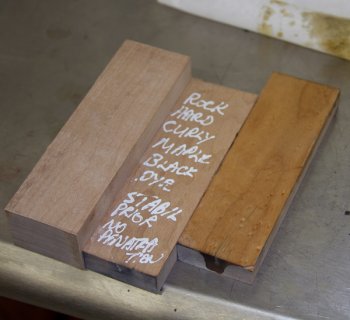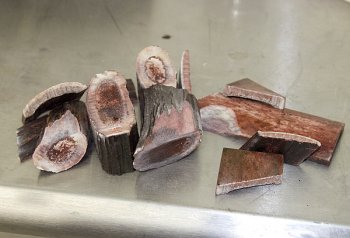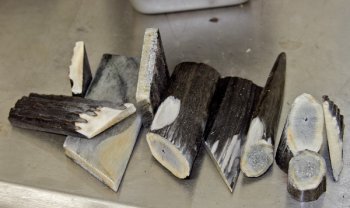continued....
The wood I am soaking in black dyed 95-1000a I will keep under vacuum for a couple weeks and then pressure for a couple weeks. What I didn't get a picture of was the few pieces of stag and bone I added to the pressure pot the next day. We will see how it all goes in a couple weeks.
In another pot, I have another batch of stag and bone soaking in two different solutions.
One is Tandy dark brown oil pro dye. The other is more stag and bone soaking in boiled linseed oil with dark brown powder dye added. I couldn't get any liquid dye (that I had) to mix in with the boiled linseed oil so I had to use powder dye. I will keep these under vac for a couple weeks and then pressure for a couple weeks.
When I break all these out I will post some pictures.
Some odds and ends I have learned. There are millions of old soda pop syrup containers out there that make a good pressure pot. These are rated to contain 120psi. These are sometimes called Cornelious kegs and the beer homebrew beer guys use them. They run around $50 to $60 used. New Cornelious kegs are quite a bit more money and are not the traditional old style Coke and Pepsi tanks. These are available as most everyone has switched to bagged syrup for soda pop now.
Paint pots are rated for 80psi but I have heard from several people they routinely take them to 120psi. Do this at your own risk. I am merely passing on what I have been told. I personally am comfortable pushing these to 120psi but i am stupid that way. One thing to note is the more chemical and less air you have in a pressure pot, the safer it is. It has something to do with volume of stored energy with more (or less) air in a container. It will also give you more to clean up if you spring a leak.
Some woods such as spalted or punky woods can take stabilizing juice in just an hour. Rock hard maple may never take stabilizing juice or dye all the way unless you have a very high pressure set up or soak for quite a bit longer than a couple weeks.
Some guys wrap every piece of wood in aluminum foil after soaking but before hardening in the oven. The aluminum foil is ground off all 6 sides to show the wood. You won't be able to peel it off. This keeps the juice from draining out before it catalyzes. I have seen this in a couple pieces. The top 1/3 of the wood will show it has clearly lost some solution and the bottom 2/3rds of a block of wood will show the solution has settled.
Here is something to think about.
When the oven reaches temperature, the outside of a block will harden first and as the higher temperature penetrates into the block, the chemical inside stabilizes. Once the outside of the block has hardened it now turns into a crude vessel of a sort. The inside of the block still has liquid chemical and gravity is pulling it down and it pools inside of the block. The aluminum foil helps hold the liquid in place on the top of the block as it won't allow air to replace the liquid as it drains to the bottom of the block. Doing this is up to you. I will have to try it out. It would make further sense to put the wood into a hot oven so it starts to harden quickly and help hold the stabilizing chemical in the block and not have it drip out.
I am hearing from multiple sources that dying is done separately. I am combining the stabilizing juice and dye to verify to my satisfaction the stabilizing juice has completely penetrated. Most guys are dying separately for more than one reason. 1. They don't have to deal with multiple colors of stabilizing juice, 2. They won't contaminate their main treating vessel with different dyes 3. They have better control dying separately and the dye remaining is easier to manage.
Several have used a mix of denatured pure alcohol with Tandy Leather dyes in a ratio anywhere from 4 to 1, or 6 to 1 alcohol to dye mix. Put this into a vessel and vacuum and pressure. Generally, everyone tells me dying wood takes a lot longer than getting stabilizer through wood. I am experimenting with Tandy Oil Pro dye, something called Transtint which is a liquid dye and some other powder aniline dyes with the brand J.E.Moser. I can tell you dyes are expensive and there doesn't seem to be a way around that. A gallon of alcohol is $13 bucks and you can't even drink the darn stuff....
Drying dyed blocks can take weeks. One tip I heard was to use this stuff:
http://www.leevalley.com/US/garden/page.aspx?p=48083&cat=2,50560
put your wood into one of those electric coolers than can heat&cool and turn it onto heat. Cover the wood on all sides with this silica gel and let it sit overnight. Your wood will be down to less than 8% moisture in a day. Pretty cool. Leave the gel in the heater/cooler until the moisture is driven off and you can reuse it.
I finally got a hold of Henkle and they are sending me catalyzer for the Resinol90C I have will report back on that when I get that going.
Just to repeat, this is not meant to be a tutorial. It is just meant to document my experiments in dying and stabilizing wood. We all move forward as a community if we share information. If you have some experience or knowledge to share, by all means jump in any time. If nothing else, I have learned there are several different ways to do this and several different chemicals that can get the job done. The pro's all talk about how much they have invested in their equipment and it's a lot. More than the average guy would want to spend.
Now here is something I hadn't heard about until now. One guy had a batch of chemical catalyze in his expensive vacuum set up. He lost $400 in wood, $800 in chemical and had to cut the chamber apart to get out the hardened mess and reweld the chamber. Having a set back like that doesn't make for a good day...

